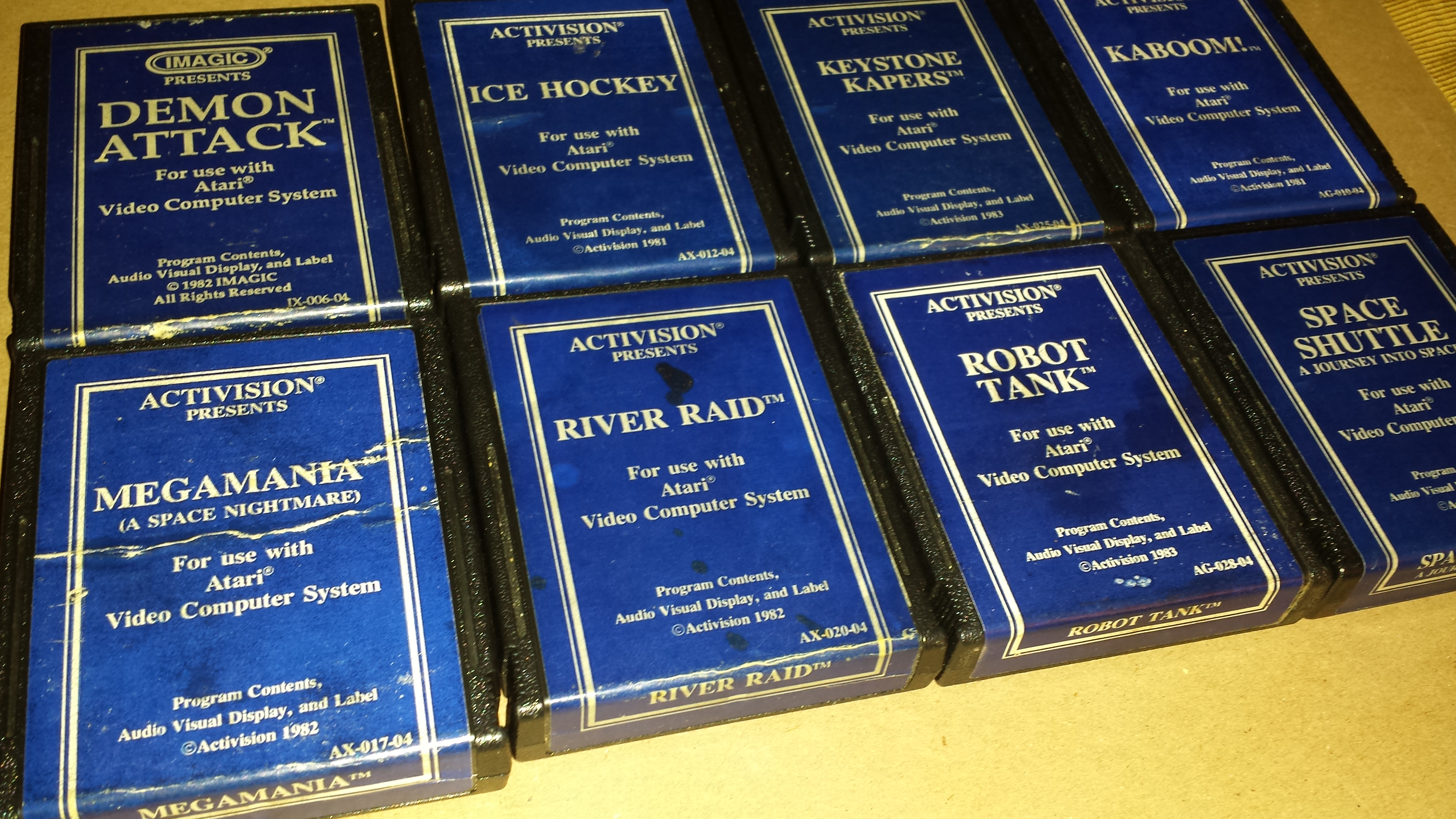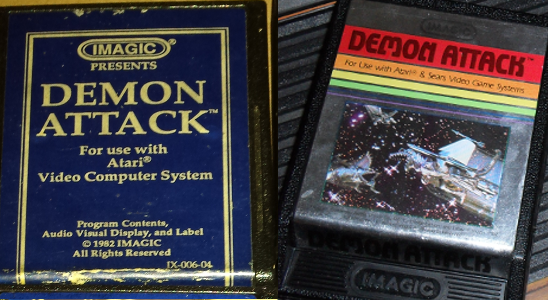Anyone who's collected Atari games knows that many games, especially those made by Atari, have at least two variations: the picture label and the text label.
Source: AtariAge.com
Of course there are other variation types, and if you care to check on all of them, AtariAge.com has a guide which lists variations by company.
Today, though, I'm just going to discuss one specific label type: the Activision "blue label" variety.
These were produced by Activision in the late '80s to save production costs * in a time when the video game business was just recovering from a horrible crash. The Atari 2600 had also been on the market for a decade, and competition from other companies (i.e. Nintendo) meant that people weren't buying for Atari as much as before. This was a horrible thing.**
You may notice that some of the cartridges up there don't say Activision, but Imagic. This points to one of the tragedies of the Video Game Crash of 1983 (see link above), the loss of so many independent game companies. Imagic went under in the mid-80s, and the rights to their games went to Activision.
Perhaps this was only right, since, like Activision, Imagic was formed by a group of ex-Atari designers who wanted to do things their way. At least Activision gave their games the dignity of being presented by their original company.
Depending on whom you ask, you may hear that the blue label versions are much more valuable, just a little more valuable, or really not any more valuable than the regular versions. It really depends on the buyer/seller, and what's considered as adding to the value.
Certainly, the blue label versions are less common than the regular versions, so rarity may be an issue. The rarity gradient may vary by game, however, so this won't always be a definite increase.
Some people, like me, enjoy getting cartridge variations, so they may see more value in obtaining a version they don't already have. Of course, this can work both ways, if the person already has the blue-label version.
And then there may be those who just don't like the alternates, and only want the picture labels. You'll always find those people; you may even be one of them.
Also, Activision games are almost universally awesome anyway.
So there you go. Look out for the blue labels, either because you want to add something different to your collection, or because you want to avoid them. The power is yours.
Peace,
JT
* During the same time, Atari was re-releasing cartridges with the "red label" variant, notable for having red labels with black-and-white label art.
** I reserve the right to add subjective comments based on my own opinions in my own blog.
You may notice that some of the cartridges up there don't say Activision, but Imagic. This points to one of the tragedies of the Video Game Crash of 1983 (see link above), the loss of so many independent game companies. Imagic went under in the mid-80s, and the rights to their games went to Activision.
Perhaps this was only right, since, like Activision, Imagic was formed by a group of ex-Atari designers who wanted to do things their way. At least Activision gave their games the dignity of being presented by their original company.
So are they worth anything?
Which is better?
Certainly, the blue label versions are less common than the regular versions, so rarity may be an issue. The rarity gradient may vary by game, however, so this won't always be a definite increase.
Some people, like me, enjoy getting cartridge variations, so they may see more value in obtaining a version they don't already have. Of course, this can work both ways, if the person already has the blue-label version.
And then there may be those who just don't like the alternates, and only want the picture labels. You'll always find those people; you may even be one of them.
So Why Do I Like Them?
This one's hard to say. They're not particularly interesting to look at, and they don't increase the value all that significantly. I suppose I just like them because they're different. They look almost like "special editions" with labels reminiscent of blueprints (not the game Blueprint, though).Also, Activision games are almost universally awesome anyway.
Especially Stampede. Source: videogamecritic.com
So there you go. Look out for the blue labels, either because you want to add something different to your collection, or because you want to avoid them. The power is yours.
Peace,
JT
* During the same time, Atari was re-releasing cartridges with the "red label" variant, notable for having red labels with black-and-white label art.
** I reserve the right to add subjective comments based on my own opinions in my own blog.






No comments:
Post a Comment